
Advancing Secondary Science Education through Tetrahymena (ASSET)
ASSET provides education materials that stimulate hands-on, inquiry-based learning of biology. Each lab module features living Tetrahymena, a single-celled protozoan that’s safe and easy to grow and work with. Students cultivate samples of this organism in lab exercises to learn about topics such as chemotaxis, microevolution, organelle growth and regeneration, and effects of vaping. Downloadable teacher guides and student activity sheets are also available.
Grades: Elementary through high school
Produced by: Cornell University (SEPA funded)

Alcohol and Your Brain: A Virtual Reality Experience
This immersive interactive teaches teens about alcohol’s effects on five areas of the human brain. It simulates a rollercoaster ride weaving and bobbing its way through the prefrontal cortex, nucleus accumbens, amygdala, hippocampus, and cerebellum. Students can control the rail car and pause at stations to learn about these key brain regions affected by alcohol—and how the substance, in turn, affects behavior. Educators and students can access Alcohol and Your Brain in two ways: 1.) a free virtual reality (VR) version for those ages 13+ with access to Quest, Quest 2, or Meta Quest Pro VR headsets, or 2.) a free video or audio-described version.
Grades: Middle and high school
Produced by: National Institutes on Alcohol Abuse and Alcoholism

Alzheimer’s and Aging Resources for Students
This webpage provides easy-to-read materials, articles, and fact sheets on Alzheimer’s and related dementias, and on caregiving, aging, and issues related to older adults. Visitors can also learn about internships at the National Institute on Aging and NIH.
Grades: High school
Produced by: National Institute on Aging

BiblioTech CityHacks: In Search of Sleep
How much sleep should you get? What happens when you're sleeping? What happens if you don't get enough sleep? In this interactive reading experience about sleep, circadian rhythms, and health, students help a young girl answer these questions so she can convince her mom to let her stay up late for CityHacks, a cool coding club that she wants to join.
See other sleep curriculum from The Partnership in Education.
Grades: 4-6
Produced by: The Partnership in Education, Duquesne University (SEPA funded)

BiblioTech REBOUND: Beating Concussions
In this interactive reading experience about concussions, sports, and brain health, students travel along as a BMX-rider uncovers the truth about concussions to help his twin sister get back on the basketball court.
Grades: 4-6
Produced by: The Partnership in Education, Duquesne University (SEPA funded)

Biology of Human
Biology of Human helps students and the public better understand advances in biomedical research relating to human biology. This program seeks to increase awareness of and interest in new biomedical research developments, and their importance to people's health and communities. Resources include comic books, activities, lessons, and other curricula with accompanying teaching guides, videos, and additional learning materials.
Grades: Middle and high school
Produced by: University of Nebraska, Lincoln (SEPA funded)

Biomedical Beat Educator's Corner: Genetics Miniseries
This Biomedical Beat miniseries explores the field of genetics—from how people inherit genes to how researchers study them. Students learn about different parts of genetics by reading the blog posts and discussing, applying, and quizzing what they learn through the activities outlined in the Educator’s Corner.
Grades: High school
Produced by: National Institute of General Medical Sciences

Biomedical Beat Educator's Corner: Immunology Miniseries
This Biomedical Beat miniseries explores the immune system, which protects the body from microbes that could cause infection. Students learn about different areas of immunology by reading the blog posts and discussing, applying, and quizzing what they learn through the activities outlined in the Educator’s Corner.
Grades: High school
Produced by: National Institute of General Medical Sciences

Biomedical Beat Educator's Corner: Pharmacology Miniseries
This Biomedical Beat miniseries looks at the important field of pharmacology: a research-based science and the study of how molecules, such as medicines, interact with the body. Students learn about different areas of the field by reading the blog posts and discussing, applying, and quizzing what they learn through the activities outlined in the Educator’s Corner.
Grades: High school
Produced by: National Institute of General Medical Sciences

Biomedical Beat Educator’s Corner
With this free resource, educators can build on existing NIH STEM content through the integration of supplemental material in Biomedical Beat blog posts. The Educator’s Corner is intended to give teachers additional tools to use in lesson plans.
Grades: Middle and high school
Produced by: National Institute of General Medical Sciences

Biomedical Engineering Adapted for Middle Schoolers (BEAMS) Lesson Plans
These lesson plans for middle school provide students with hands-on activities that focus on biomedical engineering approaches to address health care problems. Lesson topics include nanoparticles for drug delivery, DNA and gene editing, surgical robots, and biomaterials.
Grades: 6-8
Produced by: National Institute of Biomedical Imaging and Bioengineering
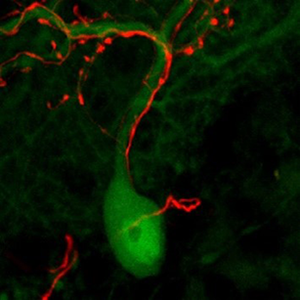
BrainU: Neuroscience Resources
Students learn neuroscience concepts with materials that include lesson plans, handouts, activities, and videos. Lesson support and other teacher resources are also provided.
Grades: Elementary through high school
Produced by: University of Minnesota Twin Cities (SEPA funded)

Cannabis: The Facts You Need to Know
This curriculum informs students about cannabis, including an explanation of CBD (cannabidiol) and the short- and long-term health effects of cannabis use, such as memory problems and addiction. Materials include a student article, lesson plan, teacher’s guide, and interactive.
Grades: 6-12
Produced by: National Institute on Drug Abuse and Scholastic, Inc.

Cell Size and Scale
This interactive from Learn.Genetics helps put the size of many biological structures in context. Students can zoom in from the scale of a coffee bean all the way down to a carbon atom. Along the way, they also see bacteria, a range of human cells, a chromosome, a flu virus, and more.
Grades: Middle and high school
Produced by: Genetic Science Learning Center, University of Utah (SEPA funded)

Charles Darwin Synthetic Review
In this free interactive experience, students learn about Charles Darwin, the naturalist, geologist, and leading contributor to the fundamental principles of evolution. Students select from a list of questions to ask a virtual Darwin and receive insight into various topics.
See other evolution curriculum from The Partnership in Education.
Grades: Middle school through grade 9
Produced by: The Partnership in Education, Duquesne University (SEPA funded)

Climate Change and Human Health Lesson Plans
These climate and health learning modules are for a variety of student audiences to explore the health impacts of climate change both in the United States and globally. Materials are suitable to teach high school courses on earth, life, and environmental sciences; history; geography; health care; or social studies. The lesson plans challenge students to consider the complex interactions between environmental health and human health and encourages them to improve their communities and design interventions to enhance climate resilience. Students also learn more about disease prevention, such as how to eliminate breeding sites for mosquitoes and how vectors—and the health risks they present in their community—may change as the climate does. Some lessons are also available in Spanish.
Grades: High school
Produced by: National Institute of Environmental and Health Sciences

Dangerous Decibels Educator Resource Guide
This guide provides background information, hands-on activities, and experiments that educators can use to teach students about noise-induced hearing loss (NIHL) and tinnitus (ringing in the ear). Activities cover the anatomy and physiology of the ear and the mechanics of hearing, the physics of sound, and ways to prevent NIHL.
Grades: Elementary through high school
Produced by: Oregon Museum of Science and Industry (SEPA funded)

Dermis Defense Game
Players of this interactive follow a typical teen named Benji to help him beat his acne breakouts and learn about the immune system. Features include colorful, comic-style storytelling; scientific content about the immune system and its functions; challenging and fun gameplay; and links to supplementary reading materials about the immune system.
Grades: Middle and high school
Produced by: The Partnership in Education, Duquesne University (SEPA funded)

Digital Shareables on Child and Adolescent Mental Health
Educators and others can use these resources to raise awareness about the importance of child and adolescent mental health. They include social media graphics/messages, videos, and educational materials.
Grades: Elementary through high school
Produced by: National Institute of Mental Health

DIY Human Body
Families and educators investigate and learn about the human body at home, at school, or anywhere with 13 easy-to-use, hands-on activities, plus videos and more. This resource is from the Lawrence Hall of Science project and is available in English and Spanish.
Grades: Elementary and middle school
Produced by: University of California, Berkeley, Lawrence Hall of Science, in partnership with University of California, San Francisco, Benioff Children’s Hospital (SEPA funded)

DNA Extraction
In this virtual laboratory from Learn.Genetics, students learn about some uses of DNA extraction. They also perform a cheek swab and extract DNA from human cells.
Grades: High school
Produced by: Genetic Science Learning Center, University of Utah (SEPA funded)

Dr. Allevable’s Lab
This mobile app for iOS and Android devices provides games that explore topics related to regenerative medicine. Students become super scientists who learn about topics such as stem cells, growth factors, and regenerative medicine technologies.
Students can also check out Dr. Allevable's laboratory and meet her friend Regenerobot in animated videos.
Grades: 5-9
Produced by: The Partnership in Education, Duquesne University (SEPA funded)
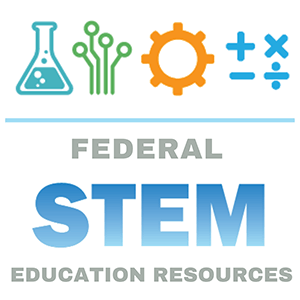
Federal Partner Resources
In addition to NIH, many federal agencies provide STEM education resources. Check out the offerings our federal partners, such as NASA, NOAA, the Smithsonian Institute, and more.
Grades: Elementary through high school
Produced by: U.S. Federal Government

FoodMASTER
FoodMASTER (Food, Math, and Science Teaching Enhancement Resource) is a compilation of hands-on and virtual programs that use food to teach math and science skills. Subjects include biology, chemistry, microbiology, nutrition, and health, as well as math concepts such as numbers and operations, algebra, geometry, and problem-solving.
Grades: Elementary through high school
Produced by: Northern Illinois University (SEPA funded)

Genetics
This reading resource introduces the subject of genetics, including details about scientist Gregor Mendel’s work, an overview of DNA, videos on Punnett squares, and illustrative examples of pedigree charts.
Grades: High school
Produced by: The Partnership in Education, Duquesne University (SEPA funded)
Genome + Environment = Dance!
This video explains to students how "what makes you, you" is a combination of a person’s genome—DNA inherited from their ancestors—and their environment, including their town/city, relationships, and lifestyle choices. It highlights that while genetic code shapes certain aspects of identity, environmental factors and personal decisions play a significant role, emphasizing that "DNA is not destiny."
Grades: 6-12
Produced by: 42 Degrees North Media for the National Human Genome Research Institute

Genome: Unlocking Life's Code
This website focuses on genomics and its impact on people’s lives. It provides a resource library useful to students and educators containing lesson plans, interactives, animations, student-written articles, and more. This website was developed to support the Genome: Unlocking Life’s Code exhibition, a collaboration between the National Human Genome Research Institute and the Smithsonian National Museum of Natural History.
Grades: 9-12
Produced by: National Human Genome Research Institute

Get Excited About Mental Health Research! Coloring and Activity Book
This printable coloring and activity book for children ages 8 through 12 provides information about types of mental health research, the process for conducting research, and paths to becoming a mental health researcher.
Grades: 3-7
Produced by: National Institute of Mental Health
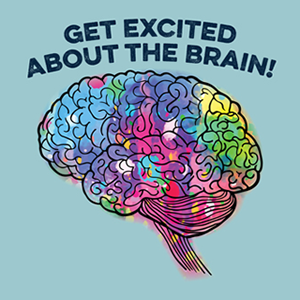
Get Excited About the Brain!
This science education activity book helps kids learn facts about the brain through games and puzzles about brain science and research.
Grades: Elementary and middle school
Produced by: National Institute of Mental Health

HEAL (Health. Equity. Art. Learning.)
HEAL creates and implements educational programs that use the arts to teach children, their families, and communities about health sciences. The project provides an activity kit using sculpture art to explore cells and viruses. It also offers care and COVID curriculum, which integrates photography and STEM activities to address protection from COVID-19.
Grades: 3-5
Produced by: Washington State University (SEPA funded)

Health In Our Hands Curriculum
Health in Our Hands teaches students to investigate critical community health concerns and use real-world contexts to appreciate the importance of both genetic and environmental factors in their risk for disease. The middle school curriculum consists of two units that focus on gene-environment interactions and natural selection through two subjects: Type 2 diabetes and substance use disorder. The high school curriculum consists of two units that focus on concepts in molecular genetics, genomics, and evolution through exploring variation in monkeyflowers and in skin color, among other topics related to human health.
Grades: Middle and high school
Produced by: Create for STEM Institute at Michigan State University in collaboration with the Health in Our Hands-Flint/Genesee Partnership (SEPA funded)

Health Quest
Health Quest focuses on engaging student interest in health science careers. Middle school students learn about various career paths through career videos and role model interviews from biomedical, behavioral, and clinical research health professionals. The program also includes a narrative-driven health sciences adventure game, where students choose a science field and then embark on a mission to help solve a scientific problem or answer a critical research question. Teachers can request the tools and resources needed to implement Health Quest in their classrooms.
Grades: Middle school
Produced by: North Carolina State University and University of California San Francisco (SEPA funded)

Heartbeat: A Mindfulness Exercise to Calm Your Emotions
This mindfulness exercise video can help to calm overwhelming emotions and the racing heartbeat associated with them. The activity doesn't require any materials and takes just a few minutes for students to complete.
Grades: Middle and high school
Produced by: The Partnership in Education, Duquesne University (SEPA funded)
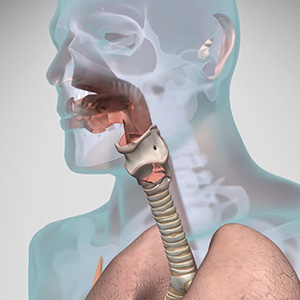
How Does the Human Body Produce Voice and Speech?
How do we produce voice and speech? This animated video explains the processes of breathing, voicing, and speaking. It shows the sequential movements within the body that allow us to create voice and speech, starting with breathing.
Grades: 9-12
Produced by: National Institute on Deafness and Other Communication Disorders

How We Grow
Students learn about how different living things grow and develop through the story of a student who has to write an essay for his science class. The essay is on growth and development, but he just doesn’t understand what’s interesting about how we grow. That is, until his room starts to come to life.
See other cell and growth curriculum from The Partnership in Education.
Grades: 5-8
Produced by: The Partnership in Education, Duquesne University (SEPA funded)

I Got This
This interactive, first-person, educational story from Lawrence Hall of Science follows a young teenage girl who discovers that she has type 2 diabetes. Told in a real-world setting, this app focuses on the symptoms, remediation, and social aspects of the disease.
Grades: Elementary and middle school
Produced by: University of California, Berkeley, Lawrence Hall of Science, in partnership with University of California, San Francisco, Benioff Children’s Hospital (SEPA funded)

Is This Legit? Accessing Valid and Reliable Health Information
Health literacy can play a role in how teens interpret messages about alcohol and other substances, and can shape their expectations about what may happen if they consume drugs and alcohol. This new lesson plan helps high school students apply skills in analyzing, evaluating, and comparing different sources of health information to empower them to reject misinformation and make choices to access content that is evidence-based and supports their overall health and well-being.
Grades: High school
Produced by: National Institute on Drug Abuse

Jane The Brain: Video Series
Meet Jane the Brain! This colorful new video series introduces students to Jane, our super-smart and friendly animated character, who helps kids understand and cope with big feelings like stress, frustration, and sadness.
Grades: Elementary
Produced by: National Institute of Mental Health

Journey of Smell to the Brain
Have you ever wondered how smells get from their source all the way to your brain? Your sense of smell does more than just let you enjoy different aromas, and a loss in this ability can impact your quality of life. This animated video shows students how smells travel to the brain and explains their importance in daily life, like alerting people to dangers such as a gas leak, spoiled food, or a fire. The video also explores reasons for changes in a person’s sense of smell.
Grades: 6-12
Produced by: 42 Degrees North Media for the National Institute on Deafness and Other Communication Disorders

Journey of Sound to the Brain
How does our sense of hearing work? Travel to the tune of a trumpet and explore sound’s journey through the ear and to the brain. The Journey of Sound to the Brain video provides a step-by-step explanation of the complex hearing process, which involves many parts of the ear working together to convert sound waves into information the brain understands and interprets as sounds.
Grades: Middle school
Produced by: National Institute on Deafness and Other Communication Disorders

Kahoot! Quizzes
These quizzes engage students in fun and interactive competition as they learn about various science-related subjects. Topics include circadian rhythms, superbugs, and the science of drug addiction. (Note: To access the quizzes, create a free account and log in. Then go directly to the NIH Kahoot! content.)
Grades: Elementary through high school
Produced by: National Institutes of Health

Kids Environment. Kids Health.
This resource is intended for kids, parents, and teachers to find fun and educational materials related to health, science, and the environment we live in today.
Grades: Elementary through high school
Produced by: National Institute of Environmental and Health Sciences

Know the Science
Why is it important to know the science of health? Simply put, there’s a lot of misinformation out there—from anecdotes disguised as evidence and excessive claims from supplement companies to TV doctors touting the latest "miracle cure." Know the Science provides tools to help people better understand complex scientific topics that relate to health research so they can discern what they hear and read and make well-informed decisions about their health. Know the Science features a variety of materials including interactive modules, quizzes, and videos that provide engaging, straightforward content. Available in Spanish.
Grades: High school
Produced by: National Center for Complementary and Integrative Health

Let's Get Healthy!
Let's Get Healthy! provides teachers and students with online access to community-specific research data generated from an education and research exhibit. These teaching resources explore different aspects of healthy choices, chronic diseases, advocacy, epigenetics, research ethics, and development, among other subjects.
Grades: Elementary through high school with a focus on middle school
Produced by: Oregon Health & Science University (SEPA funded)

Migraine Trainer App
Migraine Trainer [PDF] is an app designed to help users ages 13+ understand possible causes of their migraines, and take a greater role in their treatment by creating an individual migraine management plan with their parents and medical team.
Grades: Middle and high school
Produced by: National Institute of Neurological Disorders and Stroke

Mind Matters Series
This series includes 9 booklets, each devoted to a specific drug or drug group. Free hard copies of the booklets in English are available for order, and both English and Spanish booklets are provided online as printable PDFs. The accompanying teacher’s guide, which includes background information and activities to enhance student learning, is also online in a printable PDF format.
Grades: 5-8
Produced by: National Institute on Drug Abuse

Mobile Lab Experiences and TRIPs (Teacher-Research Institute Partnerships)
This project creates innovative science curriculum focused on epidemiology and infectious diseases. Several formats of the Investigations in Infectious Disease curriculum are available in varying lengths to provide teaching flexibility. Each version includes teacher and student manuals, videos, and readings as appropriate. Educators must submit a request form to access the curriculum.
Grades: 7-9
Produced by: Seattle Children’s Research Institute (SEPA funded)

Monster Heart Medic
In this educational adventure from the Lawrence Hall of Science project, students explore the cardiovascular system and how healthy living affects it. They help diagnose a friendly, three-eyed monster and assist him on his path to a healthier life. Available in English and Spanish.
Grades: Elementary and middle school
Produced by: University of California, Berkeley, Lawrence Hall of Science, in partnership with University of California, San Francisco, Benioff Children’s Hospital (SEPA funded)

NEI for Kids
This web portal teaches kids about how their eyes work and how to keep them healthy, plus lots of fun eye facts.
Grades: Elementary through high school
Produced by: National Eye Institute (NEI)

NIAAA Facts About Teen Drinking
This resource is designed for teens and contains research-based information about how alcohol affects their health, including both short-and long-term effects; how to identify signs of a problem with alcohol; and how to get help. Educators and parents can use this website to share important information about alcohol with their students or young family members.
Grades: Middle and high school
Produced by: National Institute on Alcohol Abuse and Alcoholism (NIAAA)

NIAAA for Middle School
This webpage contains resources and activities to help parents, caregivers, and teachers of middle school students introduce and reinforce key messages about peer pressure, resistance skills, and other important topics related to underage drinking.
Grades: 6-8
Produced by: National Institute on Alcohol Abuse and Alcoholism (NIAAA)

NIDA Lesson Plan and Activity Finder Database
Search for free lessons and activities on the science and consequences of drug use. All lessons are based on national science education standards and were developed by scientists from leading universities and the National Institute on Drug Abuse (NIDA).
Grades: Elementary through high school
Produced by: National Institute on Drug Abuse

NIDA National Drug & Alcohol IQ Challenge Kahoot!
Test teens' knowledge about drugs and drug use by taking the NIDA National Drug & Alcohol IQ Challenge Kahoot!
Grades: High school
Produced by: National Institute on Drug Abuse (NIDA)

NIGMS Science Education Resources
In addition to our curriculum materials, NIGMS has a variety of science education resources, including an image and video gallery with free-to-use scientific photos, illustrations, and videos along with corresponding descriptions; a glossary with easy-to-understand definitions for terms commonly used in basic biomedical research; a protein alphabet where students can write their names using protein alphabet letters; and much more.
Grades: Elementary through high school
Produced by: National Institute of General Medical Sciences

NIH BRAIN Initiative BRAIN Explorer Educational Experience
This choose-your-own-experiment educational experience is based on discoveries from real NIH BRAIN Initiative researchers! Students learn about the scientific method and the brain as they explore scientific experiments with the knowledgeable octopus, Dr. Octowise.
Grades: Middle and high school
Produced by: National Institutes of Health (NIH)

NINDS Brain Resources Page
This webpage provides educational resources related to brain health and function for parents, students, and teachers. These and additional educational materials can be ordered online in bulk for use in classrooms. Additional neuroscience educational videos and activities you can do at home to learn about the brain can be found on the NINDS Outreach and Science Education YouTube playlist.
Grades: High school
Produced by: National Institute of Neurological Disorders and Stroke (NINDS)

Nurturing My Mental and Emotional Health
Mental and emotional well-being is critical to overall health. Supporting teens in developing healthy coping skills can set them up for success in dealing with stress and challenging circumstances in the future. This activity helps promote mindfulness and teaches teens how to practice health-enhancing behaviors, which can support better management of stress and reduce the chances of exploring substance use as an alternative. Available in Spanish.
Grades: 6-12
Produced by: National Institute on Drug Abuse

On Our Minds Podcast
This student-led and student-produced podcast discusses the biggest mental health challenges young people face. In each episode, two teen reporters explore stories from high schoolers of PBS NewsHour Student Reporting Labs that highlight the teenage experience.
Grades: High school
Produced by: PBS NewsHour Student Reporting Labs (SEPA funded)

One Health Lesson Plans
These hands-on lessons increase high school students' understanding of One Health, a concept emphasizing connections between the health of humans, animals, and environment, along with the goal of improving all health. Lesson topics include antibiotic-resistant bacteria, the declining honeybee population, and tick-borne diseases—and their effects on humans, animals/plants, and the environment. Materials include a teacher guide with lesson preparation instructions and answer keys, as well as student handouts.
Grades: High school
Produced by: Life Sciences Learning Center, University of Rochester Medical Center (SEPA funded)

Our Cells, Our Selves
Travel along on a richly animated, dreamy bedtime story and explore the wonders of the immune system through the eyes of a 7-year-old who has just been diagnosed with type 1 juvenile diabetes. See other immune system curriculum from The Partnership in Education.
Grades: 5-8
Produced by: The Partnership in Education, Duquesne University (SEPA funded)

Pathways: Basic Science Careers
The basic science careers unit of Pathways teaches students about basic science, its contribution to people’s health, and the interesting careers that students could pursue. Pathways provides a collection of free educational resources about basic biomedical science and research careers. Be sure to check out the corresponding videos.
Grades: Middle and high school
Produced by: National Institute of General Medical Sciences and Scholastic, Inc.

Pathways: Circadian Rhythms
The circadian rhythms unit of Pathways introduces students to circadian rhythms, the “schedules” our bodies follow over the course of a day. These rhythms influence processes like hunger and the sleep-wake cycle. Pathways provides a collection of free educational resources about basic biomedical science and research careers. Be sure to check out the Kahoot! quiz.
Grades: Middle and high school
Produced by: National Institute of General Medical Sciences and Scholastic, Inc.

Pathways: Imaging
The imaging unit of Pathways highlights imaging tools that scientists use to peer into the microscopic world of cells and molecules. It helps students uncover how these techniques can aid researchers in learning about the body’s normal and abnormal processes and lead to more effective, targeted treatments for illness. Pathways provides a collection of free educational resources about basic biomedical science and research careers. Be sure to check out the Kahoot! quiz.
Grades: Middle and high school
Produced by: National Institute of General Medical Sciences and Scholastic, Inc.

Pathways: Regeneration
The regeneration unit of Pathways introduces students to the amazing world of regeneration research, ways it can improve people’s health, and the inspiring scientists who work in this fascinating field. Pathways provides a collection of free educational resources about basic biomedical science and research careers. Be sure to check out the corresponding Kahoot! quiz.
Grades: Middle and high school
Produced by: National Institute of General Medical Sciences and Scholastic, Inc.

Pathways: Superbugs
The superbugs unit of Pathways explores the basics of infectious diseases and drug resistance. Students uncover why some viruses and bacteria can’t be treated with drugs and how they can help prevent the spread of superbugs. Pathways provides a collection of free educational resources about basic biomedical science and research careers. Be sure to check out the corresponding video and Kahoot! quiz.
Grades: Middle and high school
Produced by: National Institute of General Medical Sciences and Scholastic, Inc.
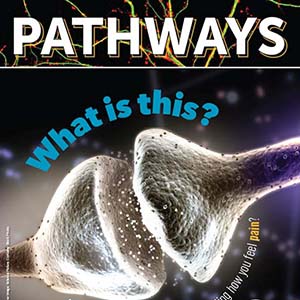
Pathways: The Brain and Anesthesia
The brain and anesthesia unit of Pathways teaches students about how scientists research the mysteries of pain. It also describes the function of anesthesia on the brain and features some anesthesiologists who study pain. Pathways provides a collection of free educational resources about basic biomedical science and research careers. Be sure to check out the Kahoot! quiz.
Grades: Middle and high school
Produced by: National Institute of General Medical Sciences and Scholastic, Inc.

PEAS (Preschool Education in Applied Sciences)
PEAS focuses on providing developmentally appropriate, hands-on, inquiry-based science learning experiences for pre-K students. The teaching guide offers activities featuring healthy foods, with content-specific background information related to the featured life science topics. Teaching and training videos give guidance on taking students through the various activities, as well as discussing certain teaching strategies to engage in the classroom. Teachers can also access more detailed models to further instruct them on effectively designing the activities.
Grades: Preschool
Produced by: East Carolina University (SEPA funded)

Personal Genetics Education Project (pgED): Lesson Plans
pgEd provides interactive lessons for educators to engage students in discussions of ethics and personal genetics. Subjects include biology, health, social studies, physical education, and psychology. All lesson plans contain background reading for teachers and students; classroom activities; discussion points; in some cases, a slide presentation or video clip; and an evaluation. Lessons can stand alone or be taught as a unit.
Grades: High school
Produced by: Department of genetics, Harvard Medical School (SEPA funded)

Protein Data Bank (PDB)-101 Origami Paper Models
With this resource, students can create origami models of viruses, DNA, and more. Download and print templates with instructions for cutting and assembling are provided. Many models—such as antibody, DNA (instructions also available in Spanish), GFP, HIV capsid, insulin, and tRNA—include related videos and/or activities.
Grades: High school
Produced by: Research Collaboratory for Structural Bioinformatics (RCSB) (NIH funded)

Resources from the University of Washington Genome Sciences Education Outreach
The University of Washington Genome Sciences Education Outreach (UWGSEO) provides various hands-on education resources. Its science curriculum on type 2 diabetes is available for high school students in biology, health, and family and consumer science classes. In the Blood Sugar Balance web game, players keep blood sugar levels within range through their food choices and exercise decisions, while regulating insulin and glucagon levels in the body. UWGSEO has also created curriculum that focuses on how food choices and the environment affect the human gut microbiome, as well as lessons on what students can learn from how the nematode C. elegans maintains balance in a changing environment.
Grades: High school
Produced by: University of Washington Genome Sciences Education Outreach (SEPA funded)

Space Chef
This fast-paced activity from the Lawrence Hall of Science project provides the starting point needed to build healthy meals using simple, readily available, and nutritious ingredients. Students require quick thinking and even quicker fingers as they race against the clock to sort through an array of ingredients and construct healthy recipes.
Grades: Elementary and middle school
Produced by: University of California, Berkeley, Lawrence Hall of Science, in partnership with University of California, San Francisco, Benioff Children’s Hospital (SEPA funded)

Stress Management Resources
Life can get challenging sometimes, and it’s important for kids to develop strategies for coping with stress or anxiety. Stand Up to Stress! is a coloring and activity book for kids ages 8 to 12 to teach them about stress and anxiety and offers tips for coping in a healthy way. Stress Catcher is a fun “fortune teller” activity that offers some strategies children can practice and use to help manage stress and other difficult emotions. Video tutorials for coping with stress include Getting to Know Your Brain: Dealing with Stress and Guided Visualization: Dealing with Stress.
Grades: Elementary through high school
Produced by: National Institute of Mental Health

The Epigenome At a Glance
This brief video from Learn.Genetics introduces students to the epigenome and explains how it influences DNA.
Grades: High school
Produced by: Genetic Science Learning Center, University of Utah (SEPA funded)

The Great Diseases
The Great Diseases engages students with the science behind their real-world experiences. The program also aims to increase students' analytical and problem-solving skills, as well as improve their health literacy. Modules discuss subjects such as cancer, infectious diseases, neurological disorders, and COVID-19. Curriculum materials for modules include a teacher primer and lesson plans, classroom materials for each lesson, and unit assessments. Teachers must request access to download materials.
Grades: High school
Produced by: Tufts University in collaboration with Boston Public School teachers (SEPA funded)

The Human Body: Bones, Joints, Muscles, and Skin
These online resources explore bones, joints, muscles, and skin, including what happens when they get hurt and how to keep them healthy. Intended for students in grades 4 through 6 who are learning about the human body, these educational materials include web content, fun and interactive Kahoot! quizzes, and suggestions for hands-on activities. Teachers may also use this information, which is mapped to national science education standards, to inform lesson plans.
Grades: 4-6
Produced by: National Institute of Arthritis and Musculoskeletal and Skin Diseases

The League of VetaHumanz SuperPower Shop
The League of VetaHumanz SuperPower Shop teaches students about how veterinarians keep people and animals healthy. The Be a Veterinary Medicine SuperHero! series contains 54 short video lessons. The This Is How We "Role" page includes a children’s e-book series in English and Spanish. It also offers an online game that explores how doctors and scientists use their superpowers to prevent and treat accidents, diseases, and other health challenges that people and their animals face. (This activity is free but requires users to set up an account.)
Grades: K-4
Produced by: Purdue University College of Veterinary Medicine (SEPA funded)

The Partnership in Education: Materials and Resources
The Partnership in Education is a program that creates innovative, hands-on educational products that make science engaging and fun for teachers, students, and learners of all ages. Topics range from the scientific method and evolution to the science of sleep and regenerative medicine. Materials and resources include videos, games, student readings, and curriculum.
Grades: Elementary through high school
Produced by: Duquesne University (SEPA funded)

Ticks: How Climate Change Affects My Health
This curriculum informs students about the spread of Lyme disease, ticks and their behavior, and the possible connection between weather pattern changes and increased incidences of Lyme disease. The three units include lessons, videos, lab experiments, and other activities.
Grades: 6
Produced by: Dartmouth Rural STEM Educator Partnership (SEPA funded)

Transmission: Gone Viral Comic
This interactive comic tells the story of the discovery of a novel disease that spreads via mosquitos from birds to birds and infects humans as well. Students explore how scientists—disease detectives—solve this medical mystery with the help of three young “scientists." A PDF version of the comic and educator’s guide are also available.
Grades: 6-8
Produced by: New York Hall of Science (SEPA funded)

TSCORE-LIFT KS
Teachers and Students for Community-Oriented Research and Education: Linking industry Partners, Faculty, and Teachers (TSCORE-LIFT) offers teacher-developed units to provide students with learning experiences that grow their interest and knowledge in the health sciences. Subject areas include the general structure and function of the human body, management processes within health care settings, and diversity in health care.
Grades: High school
Produced by: University of Kansas Medical Center (SEPA funded)
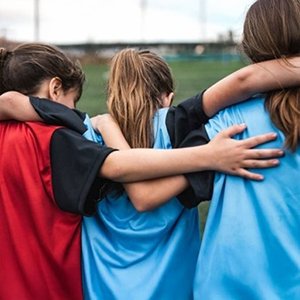
Understanding an Overdose and How to Respond to One
This lesson, which is mapped to national health education standards, focuses on recognizing and responding to a drug overdose. Through the accompanying exercises, students demonstrate their awareness of overdose symptoms and how to respond to them to save a life.
Grades: High school
Produced by: National Institute on Drug Abuse

Understanding Polysubstance Use and How to Make Health-Enhancing Choices
This lesson, which is mapped to national health education standards, helps equip teens with skills to make health-enhancing choices in challenging situations. The lesson and accompanying activity sheets assist them in understanding the risks of polysubstance use, or the mixing of two or more substances, such as alcohol, caffeine, and other drugs.
Grades: High school
Produced by: National Institute on Drug Abuse

We Can!
We Can! (Ways to Enhance Children's Activity & Nutrition) is a national movement designed to give parents, caregivers, and entire communities a way to help children ages 8 to 13 stay at a healthy weight.
Grades: 3-8
Produced by: National Heart, Lung, and Blood Institute

What Is A Pathogen?
This video teaches students about pathogens. Discussion includes the four different types of pathogens and tips for preventing pathogen-borne illnesses.
Grades: Elementary through high school
Produced by: The Partnership in Education, Duquesne University (SEPA funded)

What Is CRISPR?
This Biomedical Beat blog post explores the fascinating gene-editing tool called CRISPR. It details how in the 1980s, researchers discovered odd, repeating sequences in the genomes of certain bacterial species, later named CRISPR sequences. Now, scientists use the CRISPR-Cas9 system in the laboratory to improve our understanding of human biology, and clinicians can use it to treat some diseases, like sickle cell disease. In addition to educational information, this post also provides access to a Kahoot! quiz, which tests students’ knowledge of this tool.
Grades: 9-12
Produced by: National Institute of General Medical Sciences
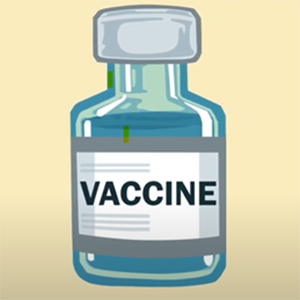
What's In a Vaccine?
What exactly goes into a vaccine? What does each ingredient do, and why is it in there? Middle and high school students learn the answers to these questions in this informational video.
Grades: Middle and high school
Produced by: The Partnership in Education, Duquesne University (SEPA funded)

You Make Me Sick Board Game
This downloadable board game is designed for two to four players who use their brains and the white blood cell “money” in their “blood bank” to fight 11 common diseases. As players move around the game board, they encounter viruses and bacteria while learning more about the immune system, vaccines, antibiotics, and steps to prevent the spread of disease such as COVID-19.
Grades: Middle and high school
Produced by: The Partnership in Education, Duquesne University (SEPA funded)